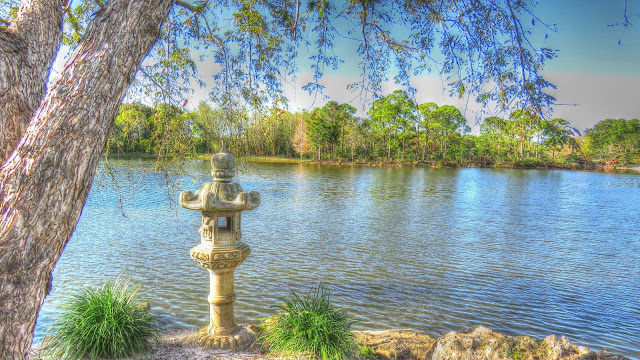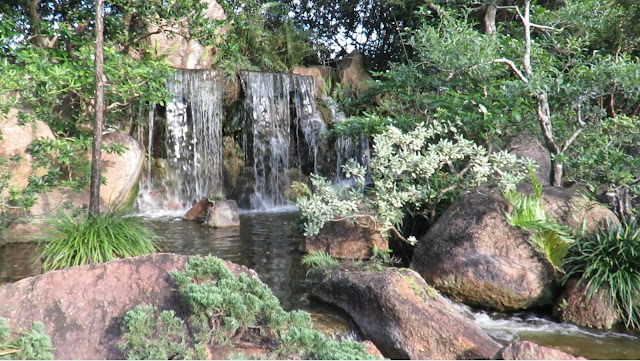Relax, enjoy and heal! 10 minutes of pure healing natural bliss, running, still and rippled water, sand and rock, birds and many other animals, trees and flowers, wind and sun and much more all set to a soothing ambient soundtrack.
Filmed at the Morikami Museum and Japanese Gardens. Contemplate the place in the world of the smallest animal you will see - much smaller than the head of a pin, the gentle ripples made by a diving turtle, and the quiet beauty in a creature that many people find "scary".....
The 16 acres that surround Morikami’s two museum buildings include expansive Japanese gardens with strolling paths, resting areas, our world-class bonsai collection and lakes teeming with koi and other wildlife. The wider 200-acre park features nature trails, pine forests and picnic areas.
Each garden is intended to express the character and ideas of a unique counterpart in Japan without attempting to duplicate those gardens, and seamlessly flow together as one garden.
Morikami Museum and Japanese Gardens, with its unique gardens and collections, is one of Palm Beach County’s most treasured cultural attractions. Located in a tranquil natural setting, Morikami invites visitors to explore its many facets and discover Florida’s heritage and its connection with Japan.
Japanese gardens (日本庭園 nihon teien) are traditional gardens that create miniature idealized landscapes, often in a highly abstract and stylized way. The gardens of the Emperors and nobles were designed for recreation and aesthetic pleasure, while the gardens of Buddhist temples were designed for contemplation and meditation.
Japanese garden styles include karesansui, Japanese rock gardens or Zen gardens, which are meditation gardens where white sand replaces water; roji, simple, rustic gardens with teahouses where the Japanese tea ceremony is conducted; kaiyū-shiki-teien, promenade or stroll gardens, where the visitor follows a path around the garden to see carefully composed landscapes; and tsubo-niwa, small courtyard gardens.
Japanese gardens were developed under the influences of the Chinese gardens, but gradually Japanese garden designers began to develop their own aesthetics, based on Japanese materials and Japanese culture. By the Edo period, the Japanese garden had its own distinct appearance. Since the end of the 19th century, Japanese gardens have also been adapted to Western settings.
New HD videos uploaded frequently. Subscribe at:


No comments:
Post a Comment